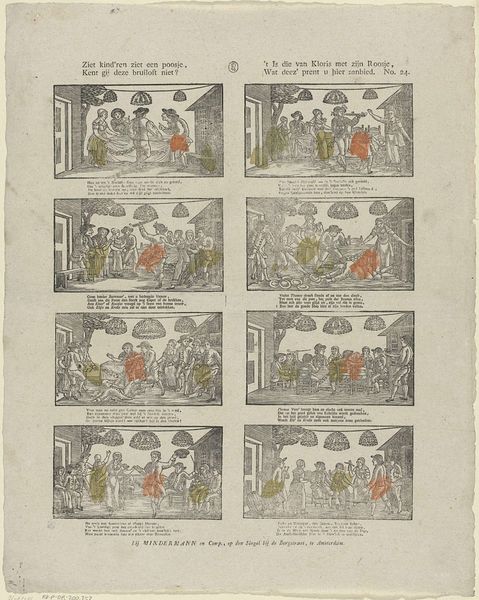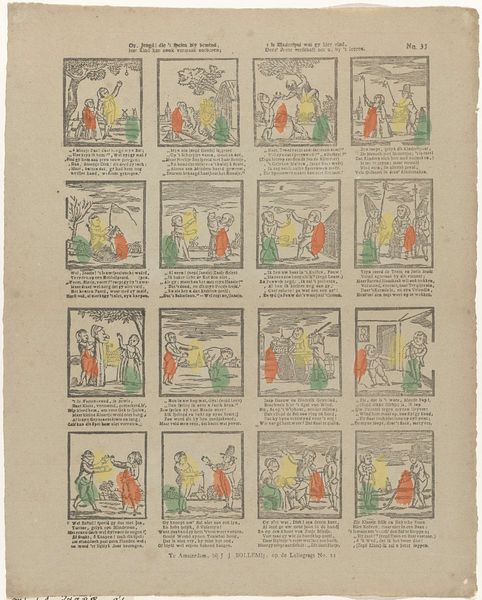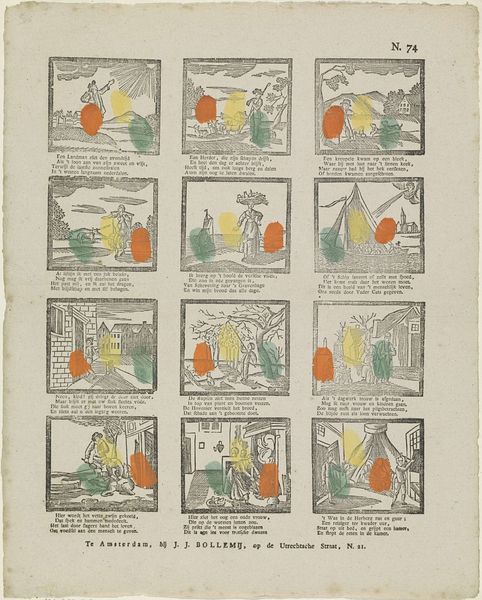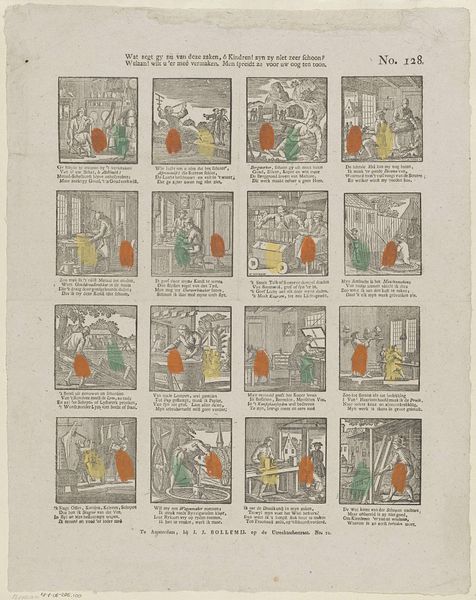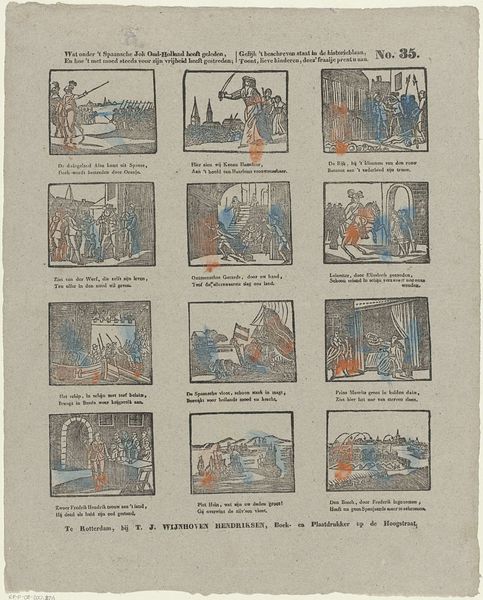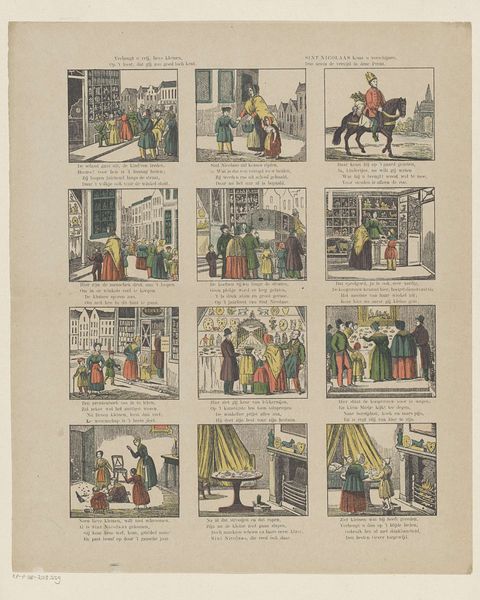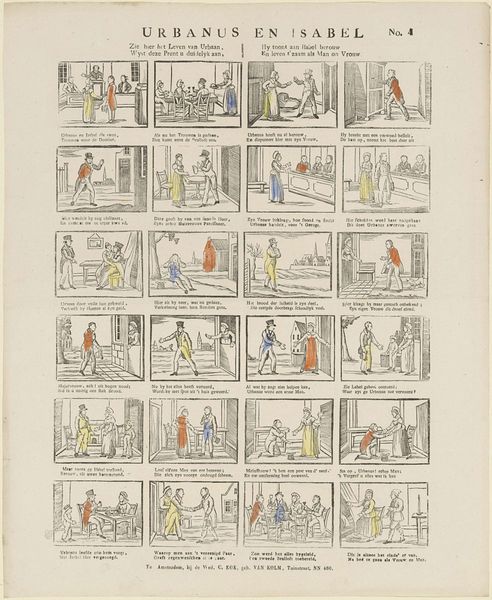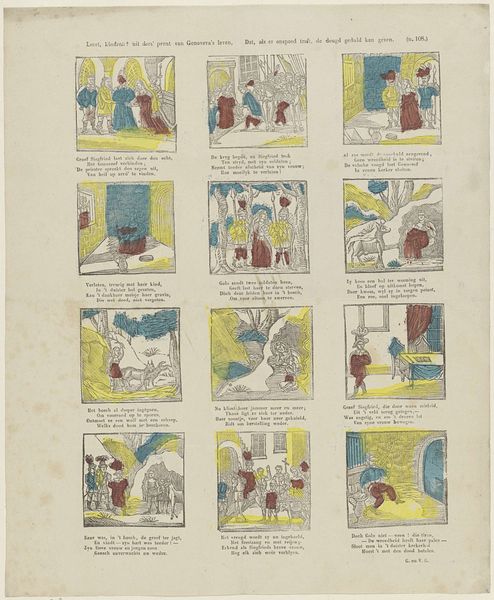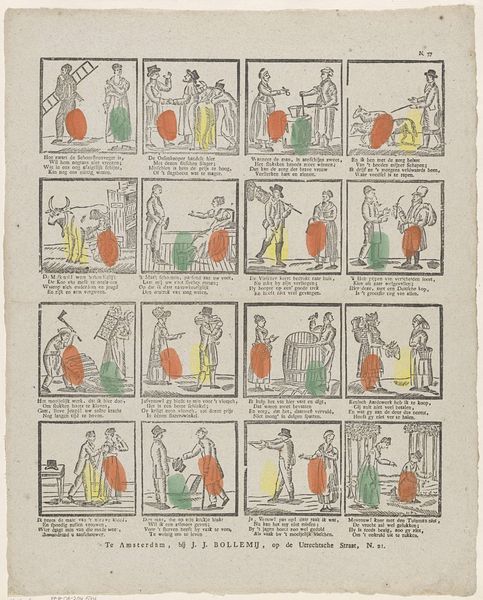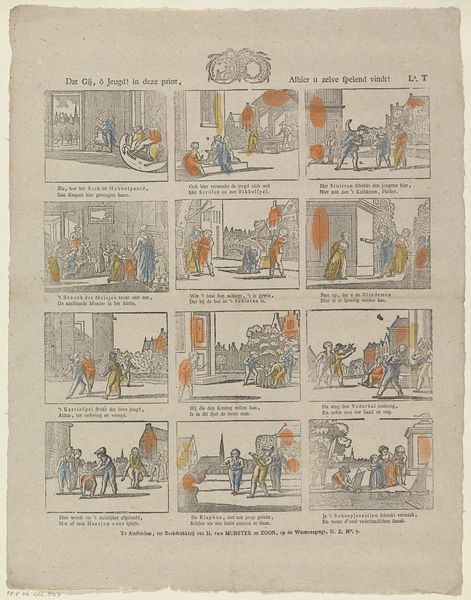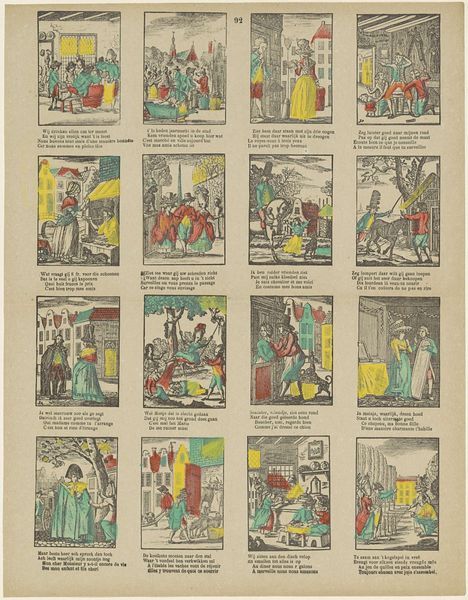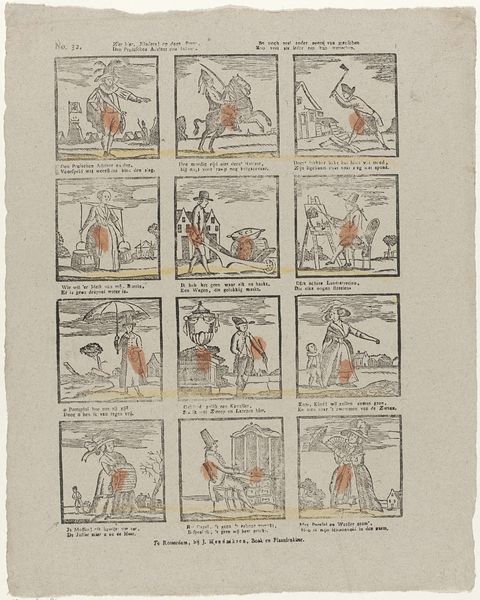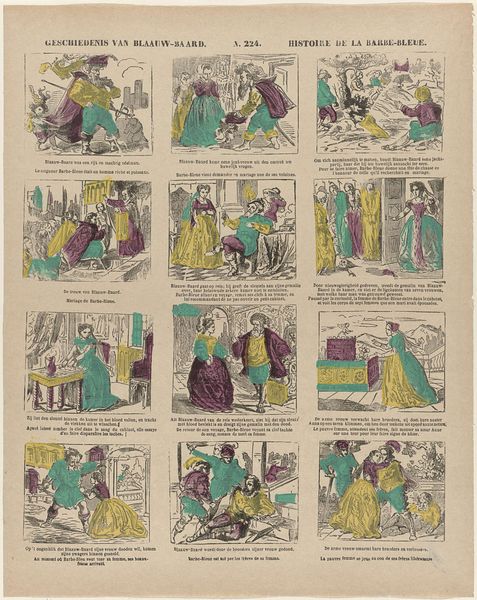
Gij, lieve kind'ren kunt uit Duimpjes voorbeeld leeren, Dat moed en overleg 't gevaar kan overheeren 1806 - 1830
0:00
0:00
jjbollemij
Rijksmuseum
print, etching, engraving
#
narrative-art
#
dutch-golden-age
# print
#
etching
#
genre-painting
#
engraving
Dimensions: height 430 mm, width 342 mm
Copyright: Rijks Museum: Open Domain
Curator: This engraving, dating roughly from 1806 to 1830, presents a series of vignettes recounting the tale of "Little Thumb," or "Tom Thumb," known in Dutch as "Duimpje." Its full title reads, "Gij, lieve kind'ren kunt uit Duimpjes voorbeeld leeren, Dat moed en overleg 't gevaar kan overheeren"—a reminder that courage and deliberation can overcome danger. J.J. Bollemij, working in Amsterdam, created this didactic print now held at the Rijksmuseum. Editor: Immediately, the visual storytelling leaps out. The print resembles a comic strip, a sequence intended to instill morality, but it also feels distinctly early, almost clumsy, compared to modern sequential art. There's a raw, unsettling charm to it, no? Curator: Absolutely. Note how the artist used distinct scenes—encapsulated little worlds, each detailing a key moment—to emphasize morality through this visual narrative. Little Thumb, or Duimpje, becomes a vessel for teaching children about cleverness in the face of adversity. It underscores that anyone, regardless of size, can exhibit courage and determination. Editor: Yet, beyond the immediate narrative, I can't help but read the visual language through a social lens. This image, crafted during the Napoleonic era, uses a folktale hero to imply something broader about national strength and ingenuity. Was this artist promoting empowerment, or just subtly pushing back against foreign powers, celebrating traditional folklore during a time of shifting borders and identities? Curator: Fascinating. One cannot dismiss the embedded visual symbolism entirely. Observe, for example, how light and shadow delineate each scene, adding gravity to the narrative. Bollemij directs the viewers' gaze through deliberate compositions, each one echoing themes of reliance, vulnerability, and ultimately triumph. Editor: And note the consistent use of the domestic sphere as a stage for Duimpje's adventures. By using humble interior spaces and quotidian settings, the artist underscores that challenges, dangers, and the possibility of clever, daring victories exist even in the seemingly most unremarkable lives. Curator: Such insights highlight not just the story of a little boy, but broader ideas around self-reliance and moral responsibility in everyday life. Editor: Right, because considering social context allows a richer appreciation for the cultural importance these unassuming prints might have had in their time, reflecting and shaping cultural norms surrounding children, bravery, and overcoming adversity.
Comments
No comments
Be the first to comment and join the conversation on the ultimate creative platform.
